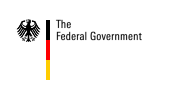Japan is a centralised island state consisting of four main islands, Hokkaido, Honshu, Shikoku and Kyushu, together with some 6,852 smaller islands. The official language is Japanese. Japan is 377,887 sq. km in area and has around 127 million inhabitants.
The Japanese often follow more than one religion, among them Shinto (107 million), Buddhism (91 million), Christianity (1.4 million) and others (11.3 million).
The capital of Japan is Tokyo. Japan is a member of most international organisations, including the UN (since 1956) and the OECD (since 1964).
G8
Japan took part in the first meeting on the G6 at the Château de Rambouillet in 1975, together with Germany, France, Italy, Great Britain and the USA.
Since then, the summit has been held four times under the Japanese presidency: in 1979, 1986 and 1993 in Tokyo, and in 2000 in Okinawa. The next summit in Japan will be in 2008.
>> G8 Communiqué Okinawa
>> G7 Statement Okinawa
Top
Political system
Japan is a parliamentary democracy with a bicameral legislature, the upper house having 242 members and the lower house 480. Half the seats in the upper house are contested every three years, while elections for the lower house are held every four years. In the case that the lower house is dissolved, election of lower house deputies will take place within forty days of dissolution.
Parliament elects the Prime Minister, who must be a member of parliament, and he or she is confirmed in office by the Emperor. The Prime Minister appoints the Cabinet. The Emperor (Tennō), pursuant to the constitution, is the symbol of the unity of Japan and its people.
The supreme sovereign is the people, represented by Parliament. Shinzo Abe has been Prime Minister since 2006. The present Tennō is His Imperial Majesty Emperor Akihito.
Japan’s administration consists of three levels: central government, prefecture and municipalities. The constitution provides the principle of autonomy of the municipalities. Since 2000, not only rights and authorities but also fiscal sources of income are being transferred from the central government to the municipalities. In 2006, a total of JPY 3 billion in state aid flowed to the municipalities, the autonomy of which continues to grow. Granting municipalities greater autonomy is one of the priorities set by the government of Prime Minister Abe.
Economy
Japan has a free-market economy. It is the third biggest exporter in the world, after the USA and Germany.
Facts:
- Gross Domestic Product (GDP): 4,670.7 bn USD
- GDP per capita: 36,600 USD
- Growth in GDP in 2005 was 2.7%, 0.1% higher than in 2004.
- Unemployment is 4.4%, youth unemployment 9%
- Budget deficit as percentage of GDP in 2005: 6.5%
- Public debt as percentage of GDP in 2004: 157.6 %
- Inflation rate in 2005: 0.1%
Top
Foreign trade
Japan's economic recovery was again supported in 2005 by a strong trade performance. Japanese exports to the USA rose to 108.20 bn EUR, while imports from the USA were 51.67 bn EUR (the total volume of Japan-US trade being 159.87 bn EUR).
In 2005 trade with China reached an all-time high for the seventh year in succession (an increase of 12.4 per cent over the previous year). At 152.04 bn EUR in total, this is only a little less than trade with the USA.
If one includes trade with Hong Kong in the figure for China, then this rises to 182.31 bn EUR, some 22 bn EUR more than with the USA. (Japanese exports to China: 64.59 bn EUR; Japanese imports from China: 87.45 bn EUR). China is thus Japan's most important trading partner.
Trade between Germany and Japan also grew in 2005, reaching a total value of 34.77 bn EUR. Compared to the previous year, imports from Japan showed a slight growth, rising by 1.6 per cent to 21.435 bn EUR. German exports to Japan rose by 5 per cent to 13.330 bn EUR. In 2005, Japan remained Germany's most important trading partner in Asia, after China.
